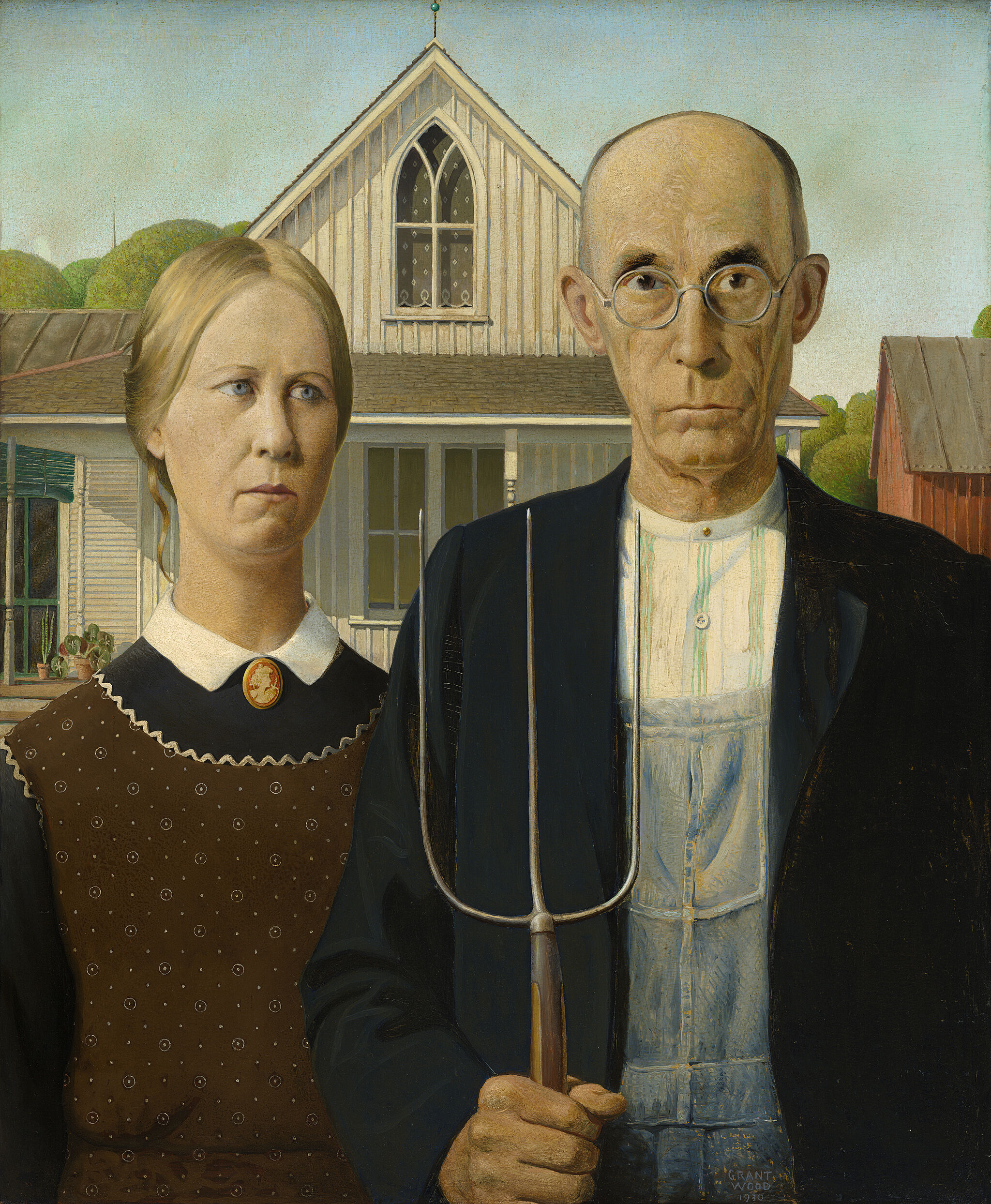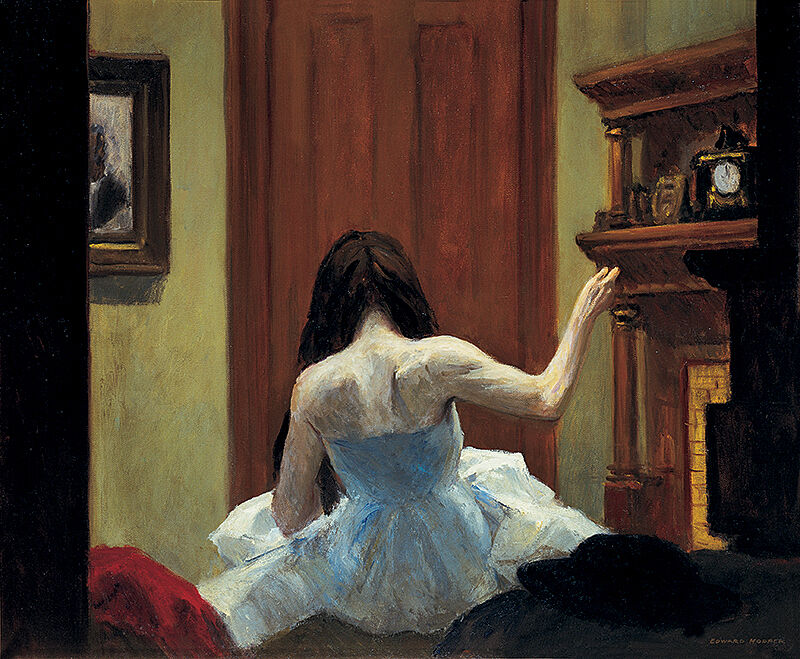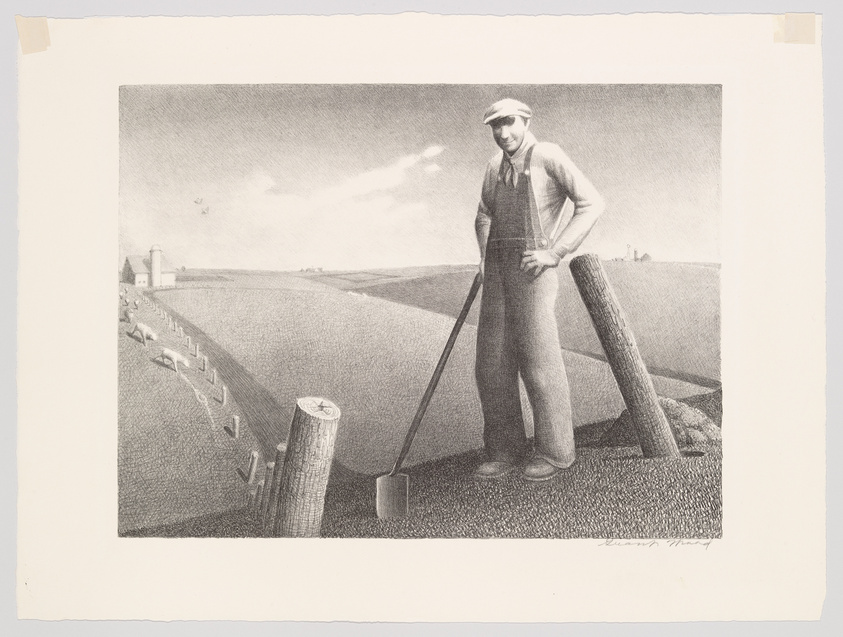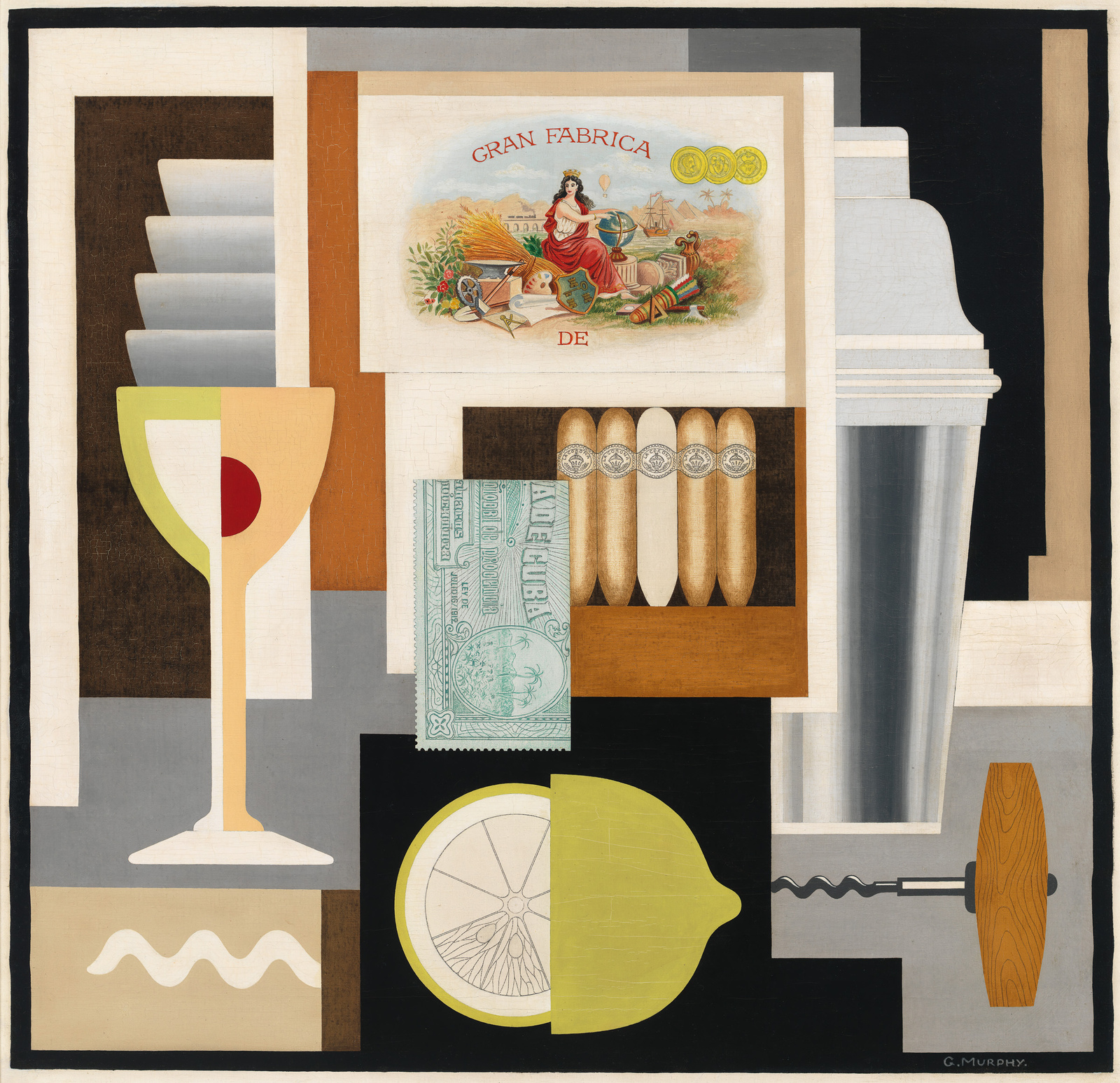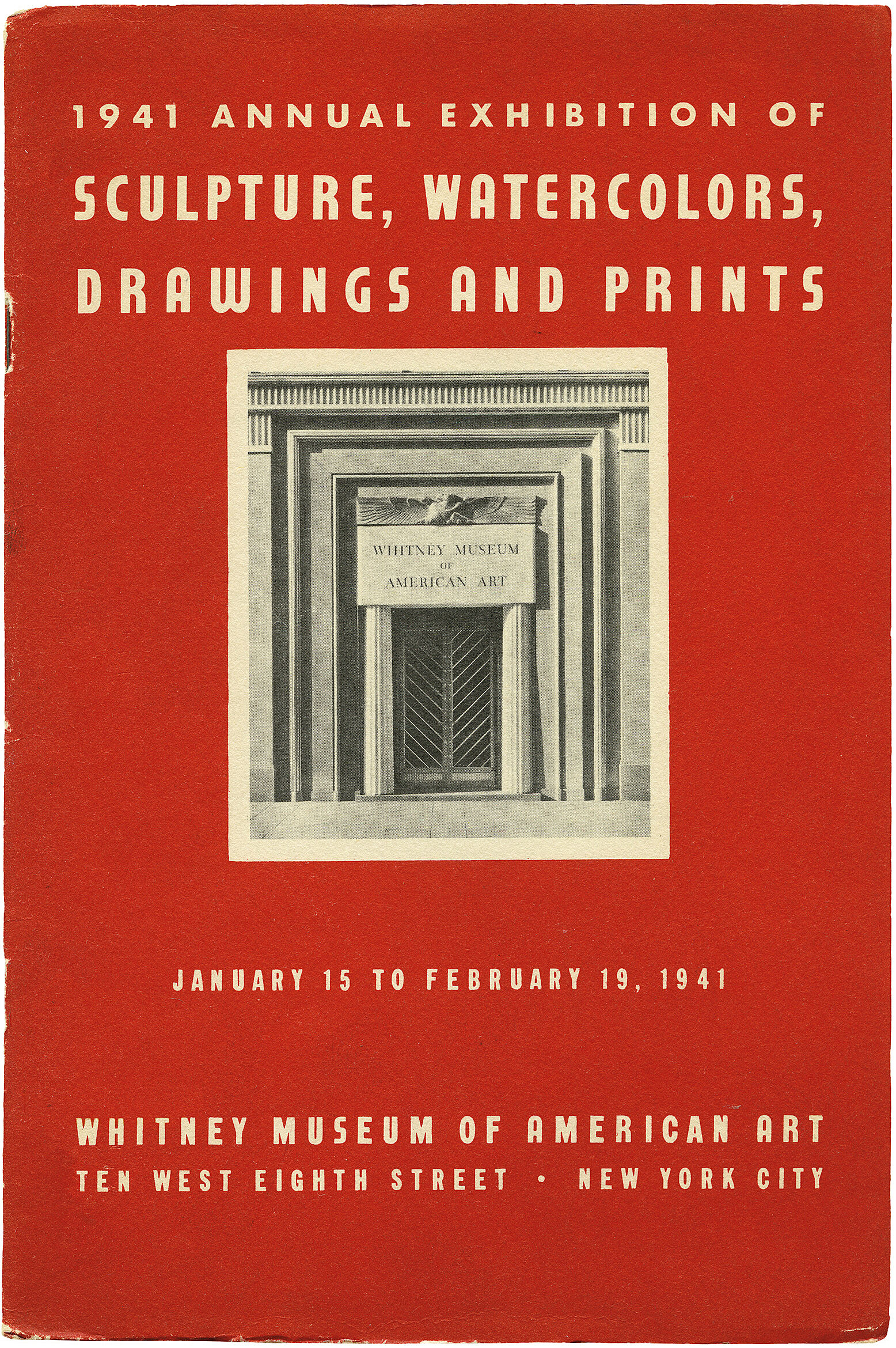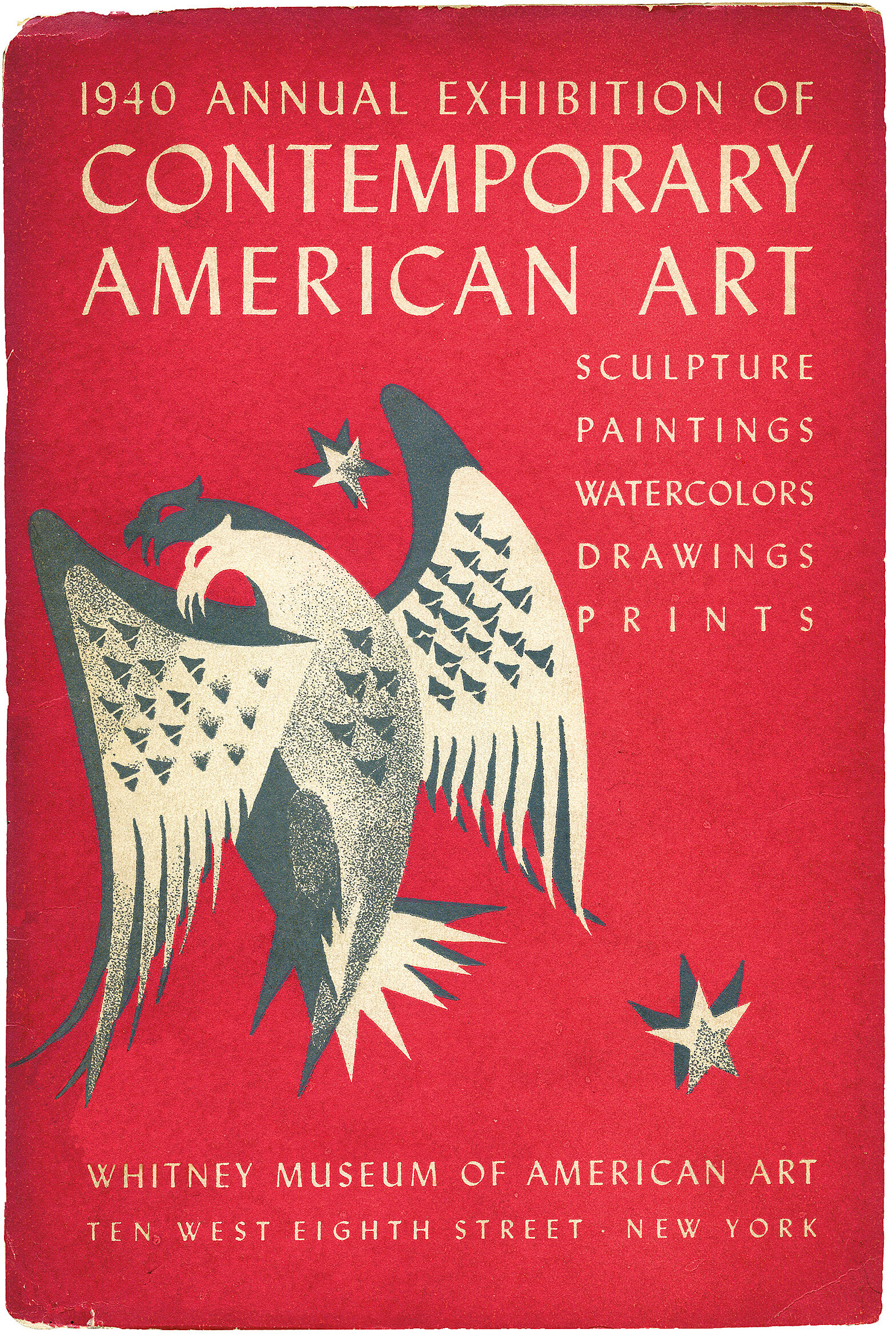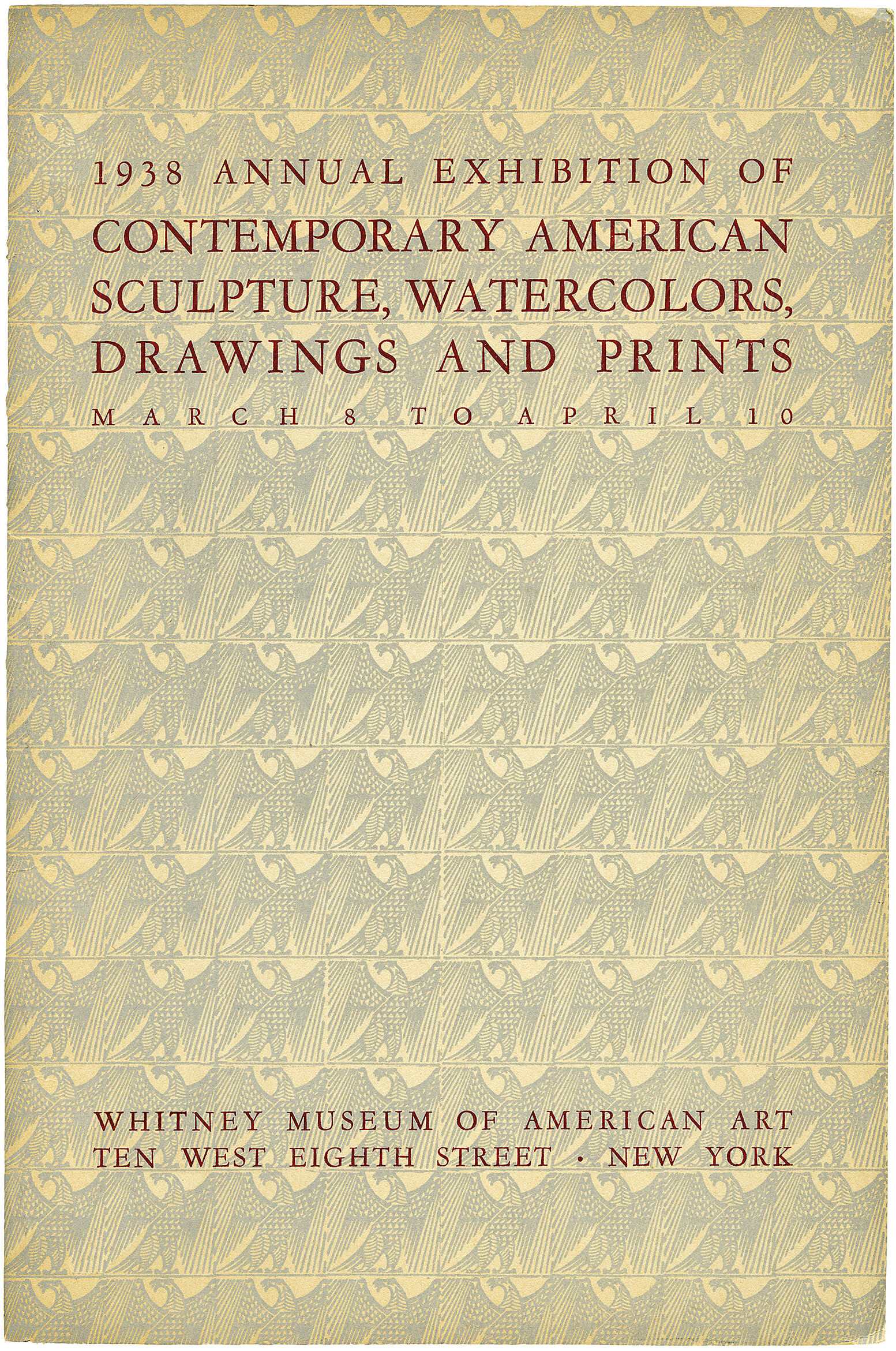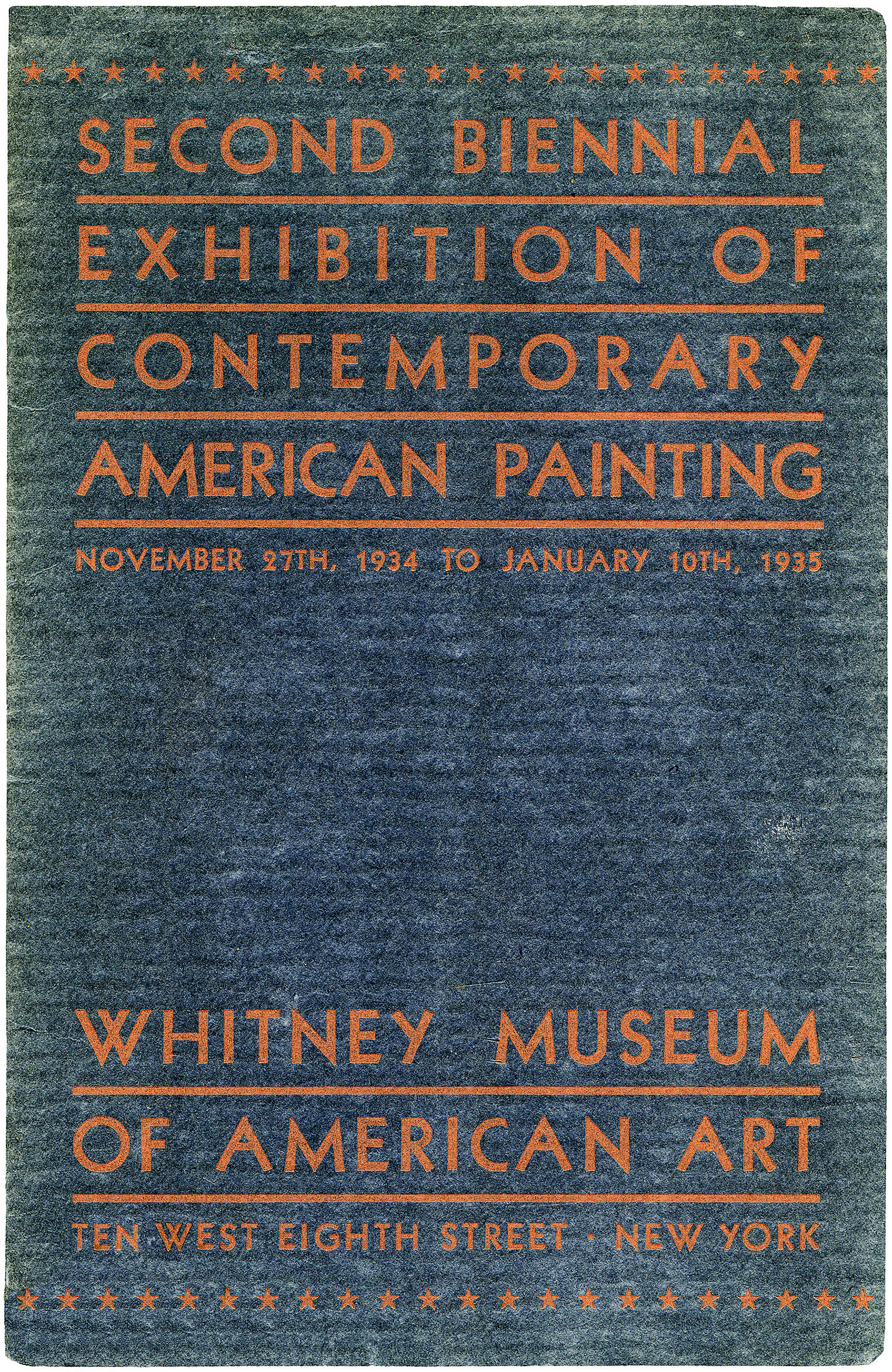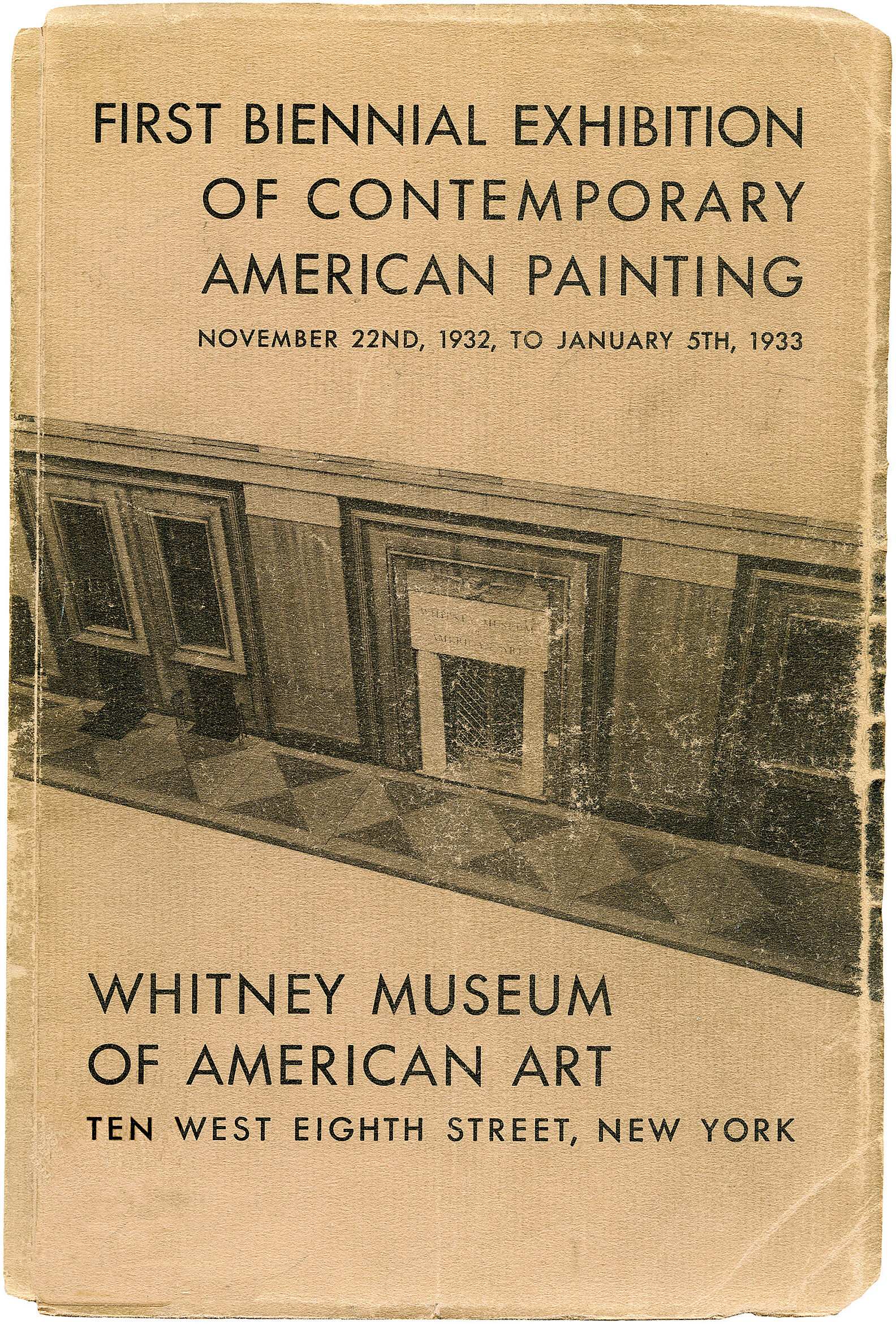Grant Wood
1891–1942
Grant Wood advocated for art based on what he called “an American way of looking at things.” Along with Thomas Hart Benton and John Steuart Curry, he was one of the primary artists associated with Regionalism, an approach to painting marked by an emphatically realist approach as well as by subject matter drawn from rural American life and its landscapes— epitomized by Wood’s iconic painting American Gothic (1930). Though he lived in his native Iowa for most of his life, his early travels to Europe were formative; a 1928 stay in Munich left him deeply impressed by the precision and lucidity of Northern Renaissance art. During this time, Wood developed the visual vocabulary that would sustain him for the rest of his career: simplified but finely delineated treatment of forms, flattened areas of color and pattern, and saturated color and tone that border on the uncanny.
Dinner for Threshers is a finely worked study for the left part of a painting of the same name that depicts the midday meal during threshing season, when farmers would join together in communal labor. Two men prepare to enter the house, washing their hands and combing their hair; the remaining parts of the full image depict a long table lined with farmers and a kitchen where women prepare the meal. While the subject derived from Wood’s memories of his childhood in rural Iowa, he drew on the visual conventions of religious painting to represent this microcosm of idealized community, endowing a mundane moment with the meaningful air of ritual.
Introduction
Grant DeVolson Wood (February 13, 1891 – February 12, 1942) was an American artist and representative of Regionalism, best known for his paintings depicting the rural American Midwest. He is particularly well known for American Gothic (1930), which has become an iconic example of early 20th-century American art.
Wikidata identifier
Q217434
Information from Wikipedia, made available under the Creative Commons Attribution-ShareAlike License . Accessed December 18, 2025.
Introduction
Wood, one of the Midwestern Regionalists of the 1930s, studied in Minneapolis and Iowa, then briefly at the Academie Julian in 1923. In 1928, he traveled to Munich and became influenced by the Netherlandish masters. Upon his return, his works featured indigenous subjects and local themes, often painted with sharp contrasts. In 1932, he was involved in establishing the Stone Art Colony and Art School, and was appointed Iowa State Director of the Public Works of Art Project. His most famous work of art is titled "American Gothic" and features a stern-looking farmer posing with his daughter in front of their home - the image has been reproduced, parodied, and appropriated countless times. American painter. Comment on works: genre
Country of birth
United States
Roles
Artist, painter, sculptor
ULAN identifier
500031056
Names
Grant Wood, Grant DeVolson Wood, Wood, Grant Devolson Wood
Information from the Getty Research Institute's Union List of Artist Names ® (ULAN), made available under the ODC Attribution License. Accessed December 18, 2025.

